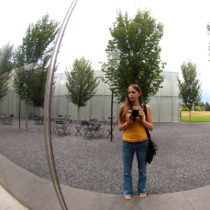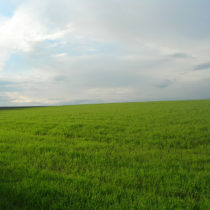Landscape Architecture for Landscape Architects › Forums › GENERAL DISCUSSION › Nerds in the landscape (How does lar respond to a tech culture?)
- This topic has 1 reply, 12 voices, and was last updated 13 years, 4 months ago by
 Andrew Garulay, RLA.
Andrew Garulay, RLA.
-
AuthorPosts
-
July 31, 2012 at 3:13 am #156803
 Emily StruthersParticipant
Emily StruthersParticipantI’m concerned about the role of Landscape Architecture in the United States. You probably are too. But, surprise, I’m not complaining about the economy here.
I’m worried about the nerds. Yup. The nerds. There are far too many nerds for Landscape Architecture to keep going like it has been going.
As a nerd, and girlfriend to a super-nerd, I can say this. Please, LA or nerd, don’t be offended. I’m both a nerd and a member of the ASLA. And I think I might be on to something here.
Now, I’d like to clarify a bit about this overwhelming nerd population. I don’t mean plant nerds. I mean vampire-pale, mountain-dew-drinking, techno-obsessed nerds. The ones that go on adventures to far off mystical lands, but only through their over-clocked multi-screen gaming system with the purpose of killing Orcs. How can landscape architecture reclaim that sense of adventure and incorporate the satisfaction of reaching goals in a more physical way than gaining stats and upgrading digital gear. With every kid on the block plopped down in front of their gaming system of choice, landscape and environmental values will fall. It’s a shame to see the clicks and taps of a few buttons on a plastic surface replace the tactile experience of getting out there and dirty and making something real. What can landscape architecture do here? How can we get these video game nerds out of their dimly lit rooms and into the landscape?
But they aren’t the only nerds I’m talking about. You, with your smartphone. The one that is literally attached to your hip with the snazzy belt clip. As a smartphone nerd, you have more apps than you know what to do with, you’ve put your entire life on there. No, really. You have your banking account info, your private emails, your diary, your vacation photos, and probably a few more embarrassing things that I won’t ask about, oh and Facebook. And you have teh intarnetz. Here we see technology as a convenience. This is awesome. I’m not being sarcastic. I really do think there is a way to blend this wireless, info-at-your-fingers, so-teathered-to-the-virtual-world-it’s-like-you-can’t-escape way of life with landscape architecture. With such accessible information connecting culture with landscape could be seamless. Navigation allows you to feel safe getting a little lost exploring. You can literally click a button and ‘share’ what you’ve found with your friends and the rest of the smartphone using world. What has landscape architecture done with this? What more can we do?
Next group of nerds: the social nerds. Contradiction? Not so much. Technology has made it such that some of us are obsessed with relationships and self-expression directed through a bright glowy screen. We can share our thoughts, pictures, plans, occupation, current location, activities, and relationship statuses through social media. Where has the need to get together at the local plaza gone? It’s gone digital. In fact, entire communities have formed without any tie to a physical common ground. I’m talking about you, Redditors, you have your very own culture and subcultures. When public spaces are being replaced with computer chairs how will landscape architecture step in?
Our culture is highly focused on ideas and technology, not nearly as much on the physical experience as the case used to be. Our economy relies on it. Our recreation is derived from it. We aren’t spending our summers at national parks, we’re spending them on the internet. I’m not complaining. I’m not saying landscape architecture is dying. I just want to make it clear that as a reflection of culture, which is a big part of what landscape architecture and architecture is, changes need to be recognized and responded to. Not only in the tools we use, but in the designs we create. This profession has a huge opportunity to make an impressive impact.
It’s my belief, that we need to stop ignoring the nerds.
TL;DR: Nerd culture is taking over, landscape architecture could do a better job of keeping up.
July 31, 2012 at 11:50 am #156841 Andrew Garulay, RLAParticipant
Andrew Garulay, RLAParticipantMake no mistake, landscape architecture is and always has been a response to the needs of someone or somne people spending money to accomplish building something on the land. Whether they are nerds, mountain climbers, or porn stars, our work and what we need to be prepared to do follows what those spending money on developing or re-developing land want us to do.
The most nonsensical phrase in landscape architecture is “build it and they will come”. When nerds decide to spend money building whatever it is that they want to build, we can and will respond to them. Until that happens, it is much more prudent to see the needs of people currently in the process of developing land and making sure that we are equiped in mind, spirit and body to get it done.
My belief is the biggest hinderence to the profession of landscape architecture is that we have a disconnect with getting on board with those who ARE developing land. Instead we worry about straw people such as this nerd culture that you speak of. Maybe they will surface as people spending money on land development, but in the mean time it is like preparing to do a show for an empty auditorium. The auditorium won’t fill up just because you are well rehersed.
Meanwhile across town a hospital needs to expand its emergency room into an already under sized parking lot. Someone has to figure out what to buy, tear down, how to reconfigure entances, re-grading, retaining, re-circulate vehicles and pedestrians, park enough cars per regulation, and meet the standards for green space, trees per parking space, handicap parking and access, and have it done in three weeks … while the architects change the plan in response to additional needs by the hospital staff. …. all because more nerds arer causing more car accidents playing wth their gadgets and getting injured walking and texting.
I guess I am making your point that we should be prepared for the nerds. The only difference is that I believe we do so by simply being responsive to real people who ARE developing land. This is where the rubber meets the road.
July 31, 2012 at 12:20 pm #156840 Leslie B WagleParticipant
Leslie B WagleParticipantI agree; it’s kind of chicken-and-egg. There have always been “living in the interior only” people (the majority) and I don’t see a lot of changes in that other than perhaps more kids needing a cure for “last child in the woods” syndrome (decreasing outdoor play). But to catch a trend means to keep your ear to the ground on where society is going in its use of the landscape, which it always will use even if only to site electric utility substations and cell towers, however sad that might be. What technology can do for us in the meantime is enhance our ability to take pulse readings.
Years ago I worked for a local architect who was the biggest, baddest in the region and I was mystified at how he had grown beyond the others of that era. I actually asked him from his own perspective, since the office seemed to have a mix of work at the time. It turns out he had initially picked up the scent of the coming era of the junior college movement. The state made a political decision to launch the whole network of these educational institutions, and they needed campuses and buildings. He got himself into the chain (somehow, probably basic company promotion where it counted) and ended up being the prime consultant on a cluster of big projects. I’m sure some of that closing of the deal talent was an additional strong suit he knew how to do, but the result was a type of “sustaining” work because after coming up with a master play, he knew the score and could place higher for repeat work etc. Another architect I know got into the Section 8 housing project current and did well. Of course both of those sources eventually ran dry but by then, their offices had time to scout out other work and their reputations were enhanced.
Right now there are probably new underground or below the threshold type seeds of future development either temporarily dormant or starting to germinate, and if they can be detected and invested in with inquiries, resume molding etc., they will propel forward whoever catches the wave once it takes project form.
July 31, 2012 at 4:25 pm #156839 Emily StruthersParticipant
Emily StruthersParticipantI’d like to look at your focus on who is developing the land, or rather, who has money and growth to be able to even fathom developing land. Healthcare, obviously, you nailed it. But what else? Where else is there potential? Social networking, technology, internet based operations. These are and are continuing to get huge. And that changes the way people live. And the spaces they need. There’s got to be something going on in response to that. Unless we want to keep grabbing the trickle of obvious opportunities, I think landscape architecture needs to consider adding in a bit more innovation to the mix. People have information sitting in their pocket. They have maps and cameras and communication attached to them at all times. It’s not the same culture that existed 5 years ago. What are we going to do about it?
July 31, 2012 at 8:32 pm #156838 Andrew Garulay, RLAParticipant
Andrew Garulay, RLAParticipantCommercial is slow here with the notable exceptions being car dealerships, banks, insurance companies, super markets (to some extent), and medical offices. Higher end residential is still quite viable if you enable others to hold on to at least some of the project management – people who work in investment firms, banking, and business consulting firms are making up a good share of the residential client base amongst the people I work with (I am in a second home resort area).
Until a significant number of people are in the position to borrow money to use for investment on developing land, we will be slower than when they can. People don’t have equity in their homes, companies are not getting banks to lend them money, and there is little monetary incentive to spend money on enhancing the human experience at most places we all do business at right now.
August 7, 2012 at 7:04 am #156837 Edward FlahertyParticipant
Edward FlahertyParticipantIn our human world experience, there are two: shelter and non shelter (in the largest sense, the landscape).
Shelter and non shelter are connected by landscape architecture and communications technology.
I’ve just lost my train of thought…
Ed Flaherty
August 7, 2012 at 8:39 am #156836 idaParticipant
idaParticipantWhat exactly are the issues that we can address by adding something physical? Do nerds have needs that are different than any other human being?
August 8, 2012 at 6:28 pm #156835 Leslie B WagleParticipant
Leslie B WagleParticipantI actually think the focus now may be a COUNTER movement to the social media and internet based private living patterns (although business operations are another matter). Sure, if a park is going to have WiFi, it might be nice to include tables as well as park benches for laptop use etc. but the “Healthy Cities” movement is alive and growing, and more about getting people to be physically active, able to bike to work, walk and shop, etc.
PBS is running a series I just happened to catch this week that opened my eyes to the wonderful inner loop using old rail rights of way that Atlanta has been heavily investing in (with lots of public support). The only thing that might concern LAs is that architect were portrayed as the main movers (good for them) who saw the potential, and while the program didn’t go into a lot about behind the scenes design, it just mentioned the two main firms involved – both described as architects. Maybe someone from Atlanta could throw some light on if there were (and are ongoing) portions of the work involving LAs.
At any rate, if interested in the series, find more info at:
August 13, 2012 at 9:35 pm #156834 MLN84ParticipantAugust 13, 2012 at 10:09 pm #156833
MLN84ParticipantAugust 13, 2012 at 10:09 pm #156833 Emily StruthersParticipant
Emily StruthersParticipantThan before the crash sure, but it’s still been a general decline, correlating to increase in technology based recreation. An article, though written in 2006, still has some value and a point: http://www.sciencedirect.com/science/article/pii/S0301479706000491
Yes those those thrifty/outdoorsy means of recreation are rising. But that doesn’t mean it’s the only thing on the rise.
What I’m trying to point out here is a serioius opportunity that I feel is being blatantly ignored by our profession. I never said drop what you’re doing and totally change course. Please don’t stop designing what you’ve been able to still find money to design. But, do give innovation some mind. The world is changing and I think the possibilities of landscape architecture should include embracing those other silos. We can’t just design for people that already appreciate us (the few that there are). I think landscape architecture could benefit from a more agressive marketing scheme, a larger target audience. And it seems to be that the trends are pointing towards the tech inclined crowd as a good place to start. After all, there are a lot of them, and they’re pretty smart, and seem to have some change in their pockets.
August 14, 2012 at 12:33 am #156832 Andrew Garulay, RLAParticipant
Andrew Garulay, RLAParticipantWe used to list “activities-experience-requirements” (AER) in school. What are the activities that nerds have? What are the experiences that they want to derive while having those activites? What are the physical requirements necessary to make thaose happen?
I don’t list those out like I did in school, but I process them just the same whether I’m working for a nerd, a monster truck driver, or a hedge fund manager. I think most of us participate in nerdy activities to one degree or another.I like to think that if we are in tune with our client’s individual AER, we’ll nail it every time. If we start to bypass the individual client by dropping him into a category and then base the AER on that category that we drop him in, we’ll not be delivering a better product in my opinion.
It is much more intimate in the residential design business because the focus is on a limited specific group of individuals which we can get to specifically understand and respond to on a case by case basis. I suppose that if you are designing for a generic client you lose that connection and a question like this may be more relevent.
August 14, 2012 at 12:47 am #156831 Emily StruthersParticipant
Emily StruthersParticipantGood point, I was certainly addressing a larger scale than residential design. I was thinking more about public spaces and AER. And then beyond that into how they can share, navigate to, and be encouraged to use. And then a little bit of dreaming about what more could happen there.
I’ve made such an extreme categorization of people to prove a point that technology is part of an entire culture. I get that people are more than labels and all that jazz, but when you zoom out enough, it’s beneficial to start categorizing to realize trends and markets and opportunities in response to such.
August 14, 2012 at 4:32 am #156830 idaParticipant
idaParticipantSo you are saying nerds prefer to experience their environments via their devices rather than simply just looking/smelling/hearing? If that’s what people want, I suppose we can introduce more interactive elements such as a digital wall that responds to a person’s NFC-enabled smartphone… I don’t know, what are your ideas?
August 14, 2012 at 10:51 am #156829 Andrew Garulay, RLAParticipant
Andrew Garulay, RLAParticipantI’m not saying one thing or another about nerds. What I’m saying is about us. I believe that most of us know our client’s needs and address them and never bother categorizing them as nerds or anything else. If we do what we are supposedly trained to do, it all processes out. There is no need to have a contingency plan for nerds or anyone else if we are understanding our clients on a case by case basis.
If there is a problem with landscape architects missing opportunities, I would suggest that getting back to the basics of the design process is the answer. I don’t know if it is taught the way it was 15 years or twenty years ago. Maybe now it is being taught that we need to have the answers and then impose them on our clients, I don’t know. What I do know is that understanding our clients and designing specifically for them is a can’t miss situation.
I don’t assume that a client wants an outdoor kitchen, a fire pit, or a fire place, yet these are very clearly trends that are at least as strong as any nerd-specific nees that no one seems to have a specific example of. Start with a clear mind and learn about your client and the rest will follow. You can’t go wrong.
That is all I’m saying.
August 14, 2012 at 7:08 pm #156828 MLN84Participant
MLN84Participant -
AuthorPosts
- You must be logged in to reply to this topic.


